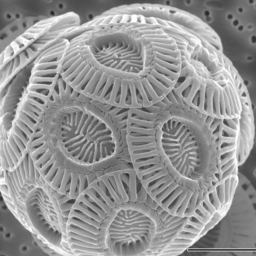Decreasing calcification in the Southern Ocean may be linked to acidification
The Southern Ocean absorbs a large fraction of anthropogenic-sourced carbon dioxide from the atmosphere each year, driving decreases in the pH and the carbonate ion concentration. This acidification occurs in a region with a naturally low carbonate ion concentration, and studies suggest that the surface of the Southern Ocean will become undersaturated with respect to calcium carbonate minerals aragonite and calcite by the end of the century. Most laboratory studies suggest that higher carbon dioxide concentration leads to decreased calcification in coccolithophores, the tiny phytoplankton that contribute to the base of Southern Ocean food webs.

Using satellite observations of particulate inorganic carbon (PIC), chlorophyll, and sea surface temperature, a recent study reports a decrease in phytoplankton calcification in the Southern Ocean over the satellite record (1998 to 2014). Averaged over the whole Southern Ocean, summertime calcification declines by 4%, and large regions in the Pacific and Indian sectors exhibit 9% reductions in calcification and 24% reductions in PIC over the same time period. The decreases in calcification and PIC occur simultaneously with decreases in the observed carbonate ion concentration, suggesting a possible link between acidification and decreasing calcification in this vulnerable region.
Decreased calcification in the Southern Ocean over the satellite record (Geophysical Research Letters)
University of Colorado, Boulder
Topics
- Carbon
- Southern Ocean
